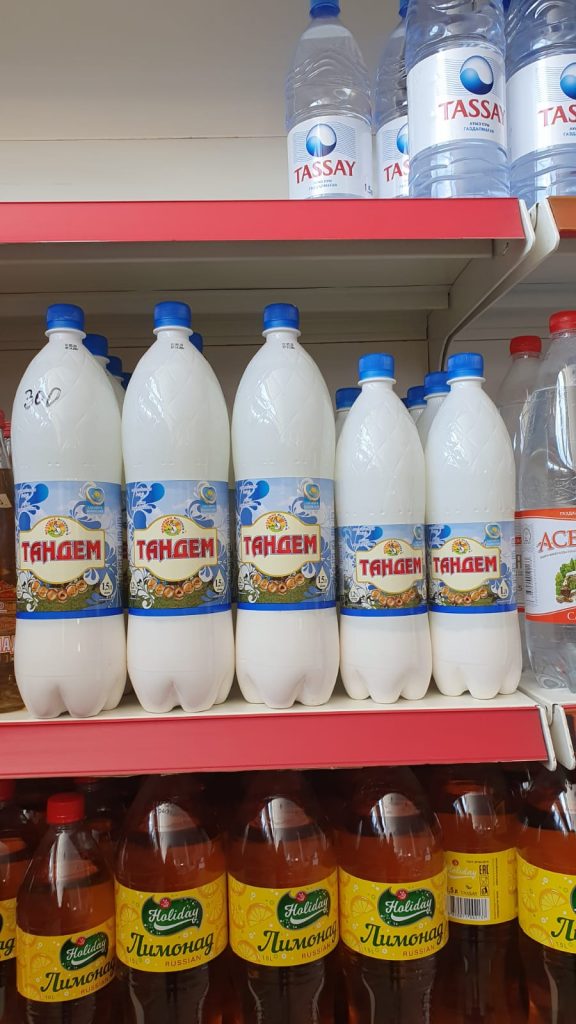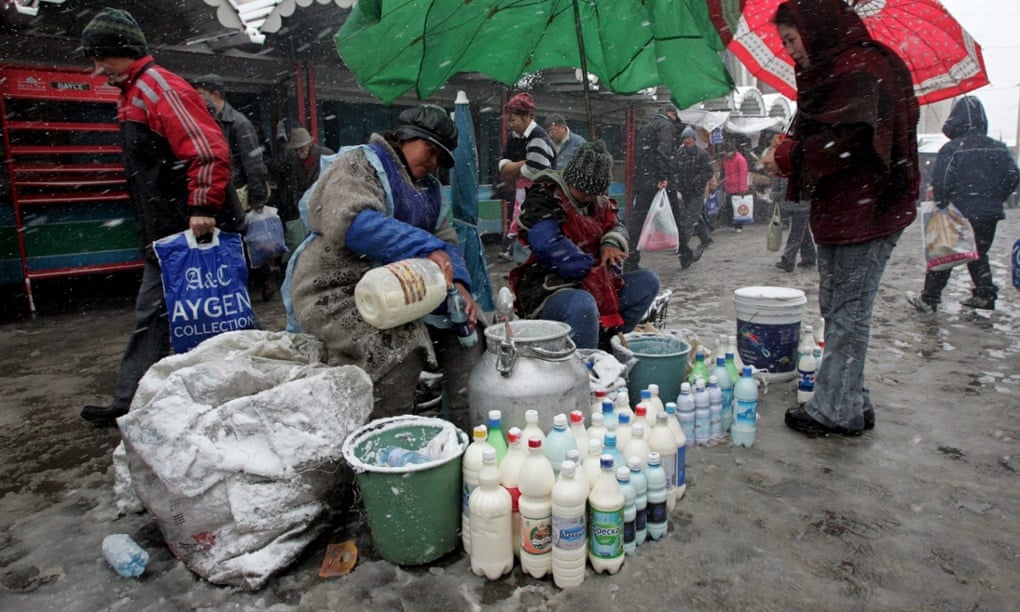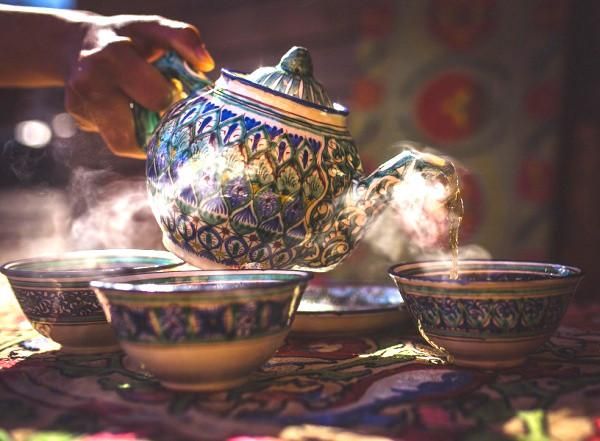I recently wrote a blog on beers in Central Asia and then realised we need something for those not drinking alcohol. Of course, the usual pickings are available, normal soft drinks like Coke and Fanta, normal juices, apple, orange or mango, however, Central Asia also has its own specific beverages. Whether it be traditional teas in Uzbekistan or horse milk in Kazakhstan, there’s also an array of local drinks to try.
You can of course get the staples of all the former Soviet countries, such as Kvas or Morse, but this is beverages more specific to Central Asia.
Kumis

Kumis is fermented horse milk and is popular all over Central Asia. The city of Bishkek, capital of Kyrgyzstan, is even named after the paddle that is used to make the beverage.
You’ll also see it spelled Kumys or Koumiss. The drink can also be made with donkey milk, but is almost always horse milk.
If you’re driving around Kazakhstan or head to of any of their bazaars, chances are you’ll see used coca-cola bottles and other plastic PET bottles, but full of a strange-looking white liquid. This will be Kumis.
Of course, Kumis does have some alcohol in it, however, the alcohol content is so low you’d have to drink an awful lot of it to feel anything.
Shubat

Also known as Chal in some parts of Central Asia, Shubat is camel milk. The camel milk is allowed to ferment which gives it a very sour flavour, and also gives the effect of carbonation.
Shubat or Chal is popular all over Central Asia, but especially Turkmenistan, as they don’t have horse products of any kind in Turkmenistan. Although the Kazakh minority near the border are known to consume things like horse milk and horse meat.
Maxsim

Another popular style of drink are those made with fermented grains, predominately malt. Made firstly by boiling the grains in water, then cooled and allowed to ferment. Slightly brown in colour and sweeter than their milk styled cousins, these drinks are particularly popular in summer and particularly in Kyrgyzstan. Other names for this style of drink in the region include Jarma and Bozo.
Tea

Lots of parts of the world take their tea seriously. However, I’m going to suggest that it is Central Asia that takes it most seriously. In Kazakhstan for example they drink, on average, 1.2kg of tea per person per year as opposed to somewhere like India, which despite it being their national drink, only consumes 650grams of tea per person per year.
Throughout Central Asia, they drink their tea in small bowls rather than cups or glasses. And dedicated tea houses, known locally as Chayhanas (also written as Chaykhana in Kyrgyz and Choyxona in Uzbek) are one of the most popular meeting places.
In Central Asia, they usually drink green tea in summer and black tea in winter, and you’ll get a very strange look if you ask for milk with your tea.





